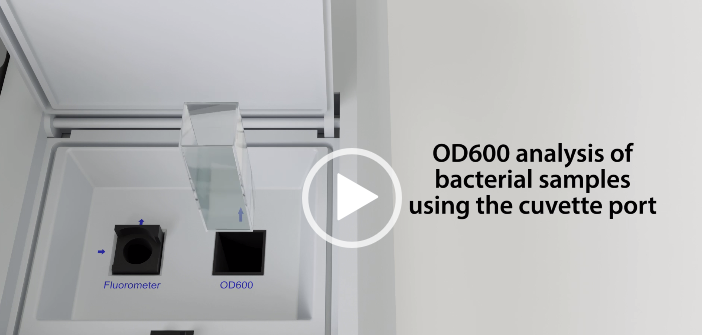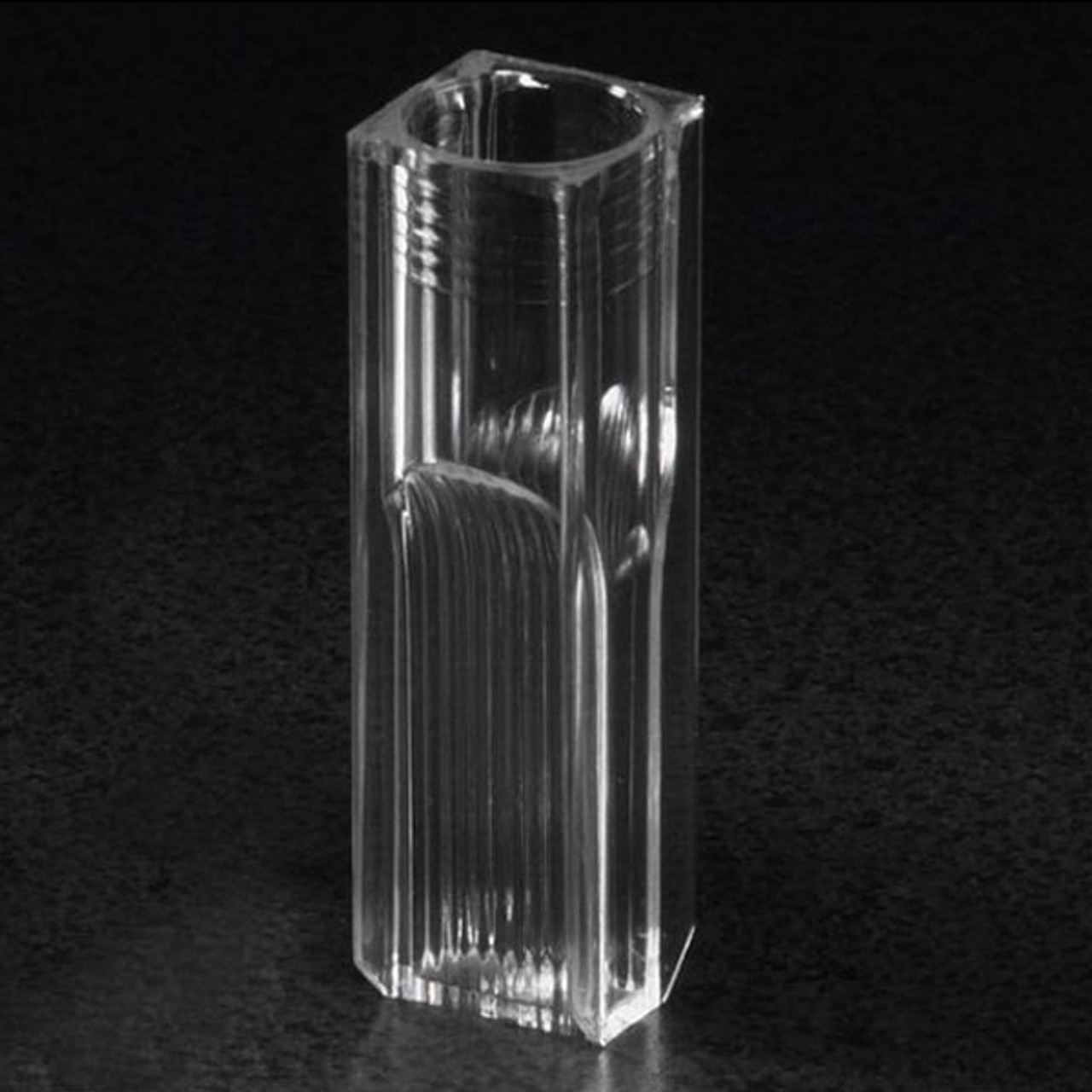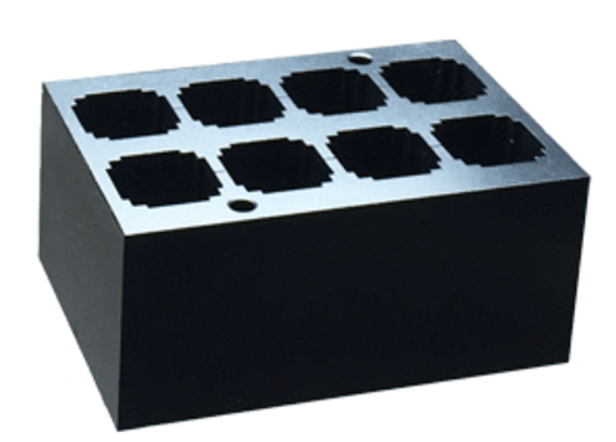A cuvette is a clear container made to hold solutions for spectrophotometric analysis.
Cuvettes are typically made from either plastic, glass or quartz – materials that are low absorbing and permit light to pass through.
The common method for using a cuvette is to pipette the sample to be analyzed into the cuvette and then load the cuvette into a slot on the top of the spectrophotometer.

Getting the best results from a cuvette is easy when keeping these considerations in mind.
The cuvette must be clean.
Because the spectrophotometer measures the absorption of light as it passes through the sample, the cuvette must be absolutely clean and free from deposits.
A dirty cuvette will block light and produce inaccurate readings.
To ensure the best quality results, make sure the cuvettes come packaged in dust free trays. Some cuvettes are individually wrapped which adds another layer of cleanliness.
Always visually inspect the cuvette prior to use and discard a cuvette with scratches, streaks, or residue.
Proper handling of the cuvette prior to use is critical. Never touch one of the sides that light will pass through, even when wearing gloves.
Hold the cuvette on a side opposite the light path or handle with a fresh Kim Wipe or lab wipe.
Pipette the sample carefully to ensure nothing gets on the exterior of the cuvette.
Choose a cuvette for the correct wavelength range and chemical compatibility.
When analyzing absorption in the 340 to 800 nanometer range, inexpensive polystyrene cuvettes are fine.
Glass cuvettes can be used for visible range readings as low as 320 nanometers.
Quartz cuvettes are ideal for analysis using the ultraviolet range.
Polystyrene is the least chemically resistant option while quartz is temperature safe and non-reactive.
Polystyrene cuvettes are single use while glass and quartz can be reused if the lab has a good cleaning process that effectively removes even sticky proteins or other stubborn substances.
Pick the right pathlength to match the sample concentration.
The right pathlength is determined based on the concentration of the sample and the sensitivity of the spectrophotometer.
Samples with a high concentration do not require a long pathlength while low-concentration samples do.
Other helpful cuvette tips
To reduce the risk of spills that could compromise the spectrophotometer or harm personnel, don’t fill a cuvette beyond eighty-percent capacity.
Temperature safe cuvettes can be used to incubate samples with this compact dry bath block for the Benchmark Scientific MyBath Mini dry bath:
If quartz cuvettes are too costly, Stellar Scientific offers PMMA (an acrylic) cuvettes for UV-Vis spectrometry.
All of Stellar Scientific’s cuvettes are compatible with the SmartDrop Nano family of spectrophotometers.



